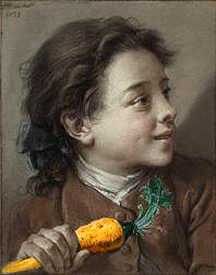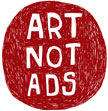11.24.2008
Two weeks ago I took my students down to Moganshan Lu, a famous Shanghai street which has been converted from old factories into contemporary art galleries. Not surprisingly, many of the students were drawn towards the rows of spray-painted walls on the long alley that leads into the old factories more than exploring some of the galleries. To be perfectly clear, I understand this completely. I'm drawn there too. There is something about well-executed graffiti that I find fascinating. Perhaps its because of the 'taboo' element of it, or perhaps it brightens up what is often an otherwise uninteresting wall. Perhaps because when it makes a political statement, its not hidden in behind museum walls to preach to the converted.
There's an interesting and important distinction made in this article about the 'Broken Windows Theory' in the Economist. This theory basically suggests that if an area looks dangerous (broken windows, litter, graffiti), then petty crime goes up. A new study has found this to be true. However, they made one important distinction- one which can be easily overlooked as its not the focus of the article:
His group’s first study was conducted in an alley that is frequently used to park bicycles. As in all of their experiments, the researchers created two conditions: one of order and the other of disorder. In the former, the walls of the alley were freshly painted; in the latter, they were tagged with graffiti (but not elaborately, to avoid the perception that it might be art).I'd be interested to see a controlled experiment in which the graffiti cannot be 'mistaken for art', to examine how that changes the dynamics of the location.
(Emphasis mine).
I'm a strong believer in the idea that language shapes the way we think. The word 'graffiti' has implicit negative connotations. Sometimes we distinguish "bad" graffiti by calling it "tagging", although that's a messy and often inappropriate distinction. However, what word do we have to describe "the good" graffiti? "Street Art" is too broad, and "Murals" muddies the definition even further. "Graffiti Art" adds an element of unnecessary pretentiousnesses.
 None of these words, for example, adequately describe Anna Garforth's 'sustainable graffiti'. Sure, that's an unusual example, but the contrast between the negative connotations of 'graffiti' and the simplistic beauty of Garforth's work stress the need for a new way to talk about this kind of art.
None of these words, for example, adequately describe Anna Garforth's 'sustainable graffiti'. Sure, that's an unusual example, but the contrast between the negative connotations of 'graffiti' and the simplistic beauty of Garforth's work stress the need for a new way to talk about this kind of art.
Tags: Advocacy, Environmental Art, Graffiti, street art















I agree that graffiti presents certain challenges with regards to talking or teaching about it in the classroom. As you suggest, the term itself comes with certain baggage. It's a lot like the word "scribbling," which we tend to think of in negative terms. I frequently use "mark-making" instead to refer to childrens' early drawing activities for that reason.
As for coming up with another word or phrase . . .good luck with that. I prefer the use of the umbrella phrase "street art" to refer to the range of ephemeral art forms and activities (which includes graffiti) that are created, displayed and/or performed, often illicitly, in the public sphere. How's that for a pretentious definition?
I feel the larger challenge is to get art teachers talking and teaching about graffiti, or street art in general. Perhaps it is the illicit nature of graffiti that keeps it out of a lot of art classrooms? While I know some art teachers teach about Keith Haring,I'm not sure the work by him that is often shown in the classroom is actually "graffiti" as opposed to being "graffiti-like" or inspired. But, let me not over-analyze here.
Another "street artist" that I hope art teachers will look at for possible inclusion in the curriculum is Robin Rhode, a South-African artist that creates drawings on public walls and then interacts with them. There is also Shepard Fairey, which you've brought up here on the CR before. Most art teachers are probably familiar with his recent work (the Obama posters), but not his name. Then, of course there's Banksy. Where does his work fit into this scheme? Is he a "graffiti artist?" or a "street artist?"
BTW: The November issue of ArtNews includes a special feature on "Street Art." To quote from that article:
"Street art—including stickers, posters, murals, graffiti, and even 3-D sculptures—is making its way into mainstream galleries and museums."
Also, here are two pretty good online resources on graffiti:
New York City Graffiti @149st
http://www.at149st.com
Graffiti Archaeology
http://www.otherthings.com/grafarc
Lastly, I encourage your readers to check out the The Graffiti Research Lab (http://graffitiresearchlab.com), which offers an intriguing look at here graffiti artists may go in the future.
Well, as I said earlier, interesting topic.
-Craig
We were introduced to the term 'mark making' in grad school- its funny because at the time, I just thought it was a pretentious way of saying 'scribbling' - and maybe it is, but its also an important distinction. In the last few years maybe I've been more willing to err on the side of pretension rather than undervaluation.
I agree about the reasons its not shared in art rooms. Especially because if 'street art' starts appearing in the halls after a lesson... that can't look to good. On the other hand, I had a 'graffiti wall' in my classroom, and the only rule was that they couldn't spray during class time (even though it was a well ventilated room, it was still indoors and we had other things to do anyway). The students were careful about what they put up- not because I was overly critical about it, but because, I think, they took ownership of the wall and making it look nice. I think that was a pretty important lesson - for me- about teaching about graffiti.
I doubt there will be a new word for 'good graffiti' any time soon because (a) its a very politicized word, and (b) there isn't a lot of concern over changing it.
Although.... Perhaps we can call it "advanced mark making"? I kind of like that.
Thanks for all the resources that you posted, Craig. I'm not familiar with Robin Rhode, but am looking into his work.
www.reversegraffitiproject.com